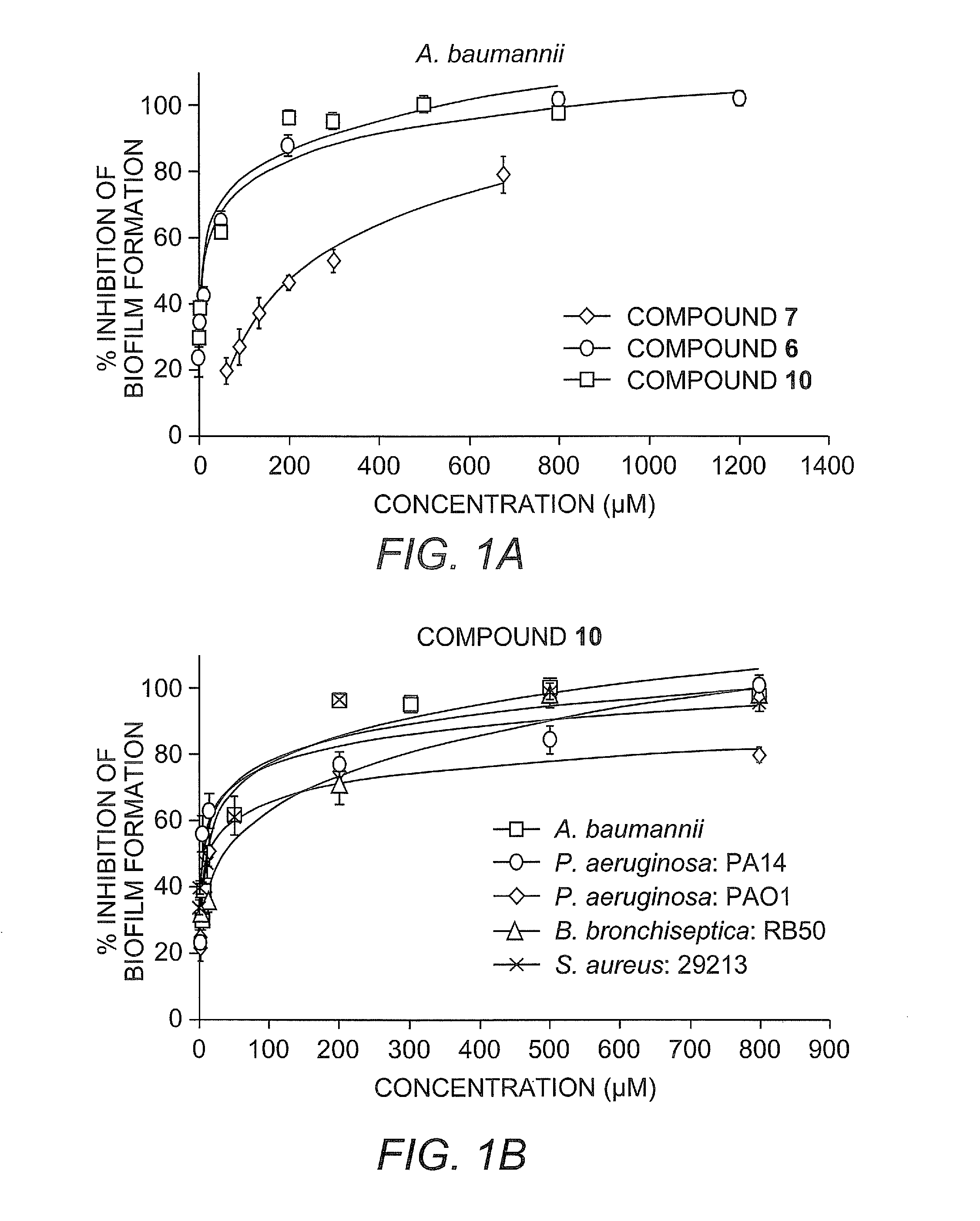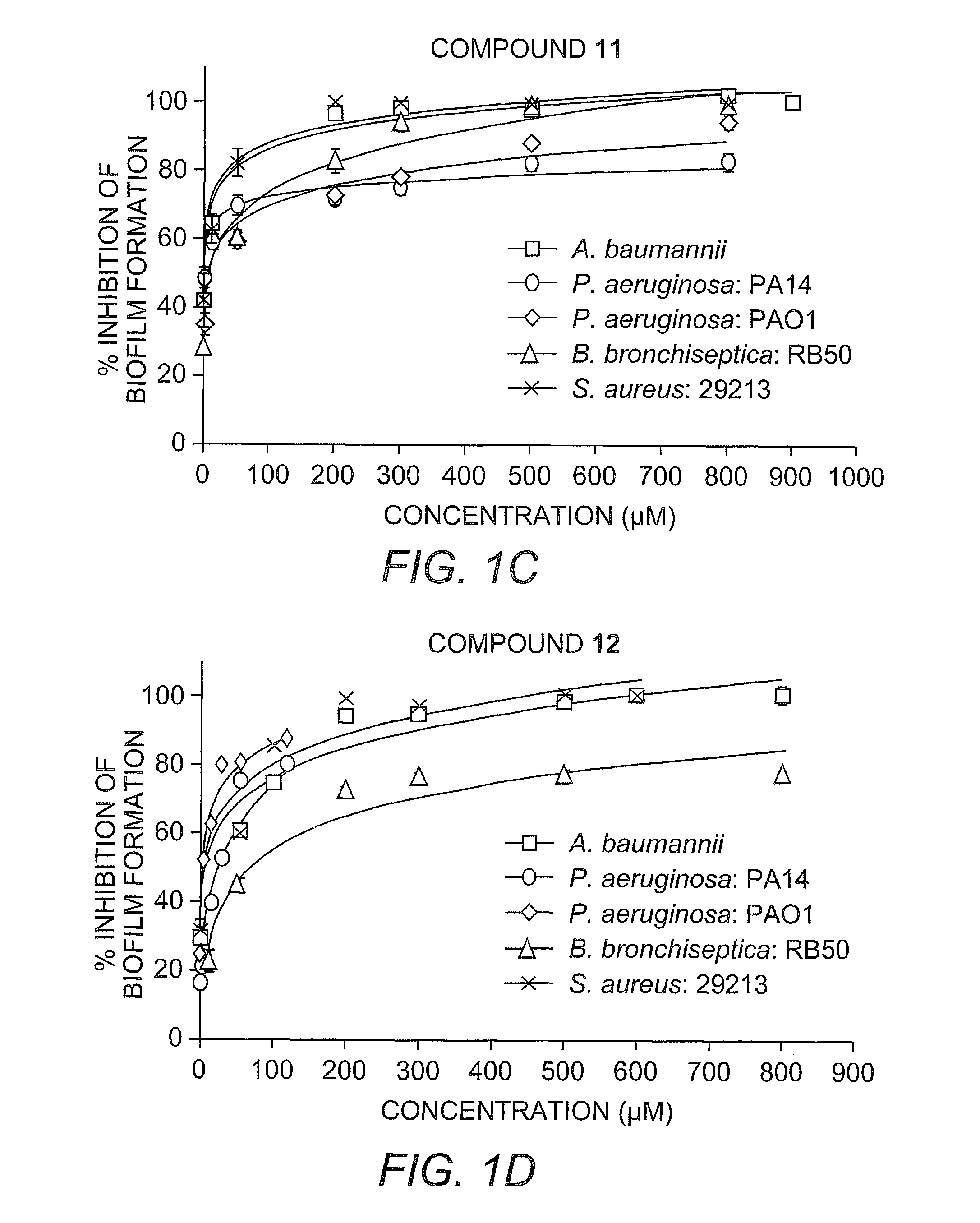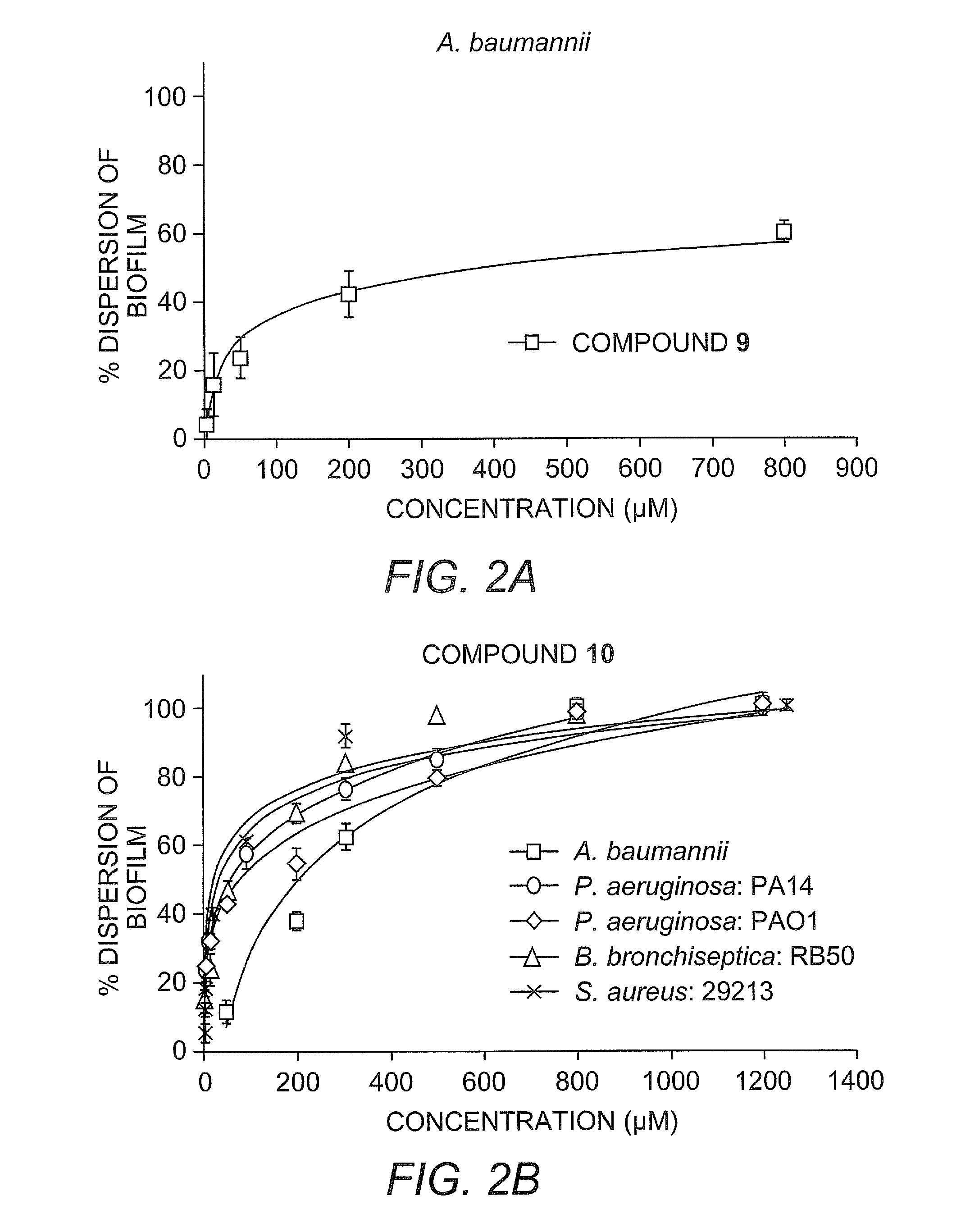Inhibition and dispersion of bacterial biofilms with imidazole-triazole derivatives
a technology of imidazole and triazole, which is applied in the field of inhibition and dispersion of bacterial biofilms with imidazoletriazole derivatives, can solve the problems of inability to eradicate bacterial colonization in the airways of cf patients, persistent infections of indwelling medical devices remain serious problems for patients, and achieve the effects of preventing, reducing, inhibiting or removing a biofilm
- Summary
- Abstract
- Description
- Claims
- Application Information
AI Technical Summary
Benefits of technology
Problems solved by technology
Method used
Image
Examples
example 1
[0587]Herein we report the development of 2-aminoimidazole / triazole conjugates that inhibit and disperse biofilms from bacteria across order and phylum without inducing bacterial death.
[0588]Our recent work has identified imidazole derivative compounds that prevent, remove, and / or inhibit the formation of biofilms, including TAGE, dihydrosventrin (DHS), and RA-11. See U.S. Patent Application Publication No. 2008 / 0181923 to Melander et al.
[0589]
[0590]We have begun to investigate if modifications to the core DHS structure will deliver derivatives with enhanced anti-biofilm activities (J. J. Richards, T. E. Ballard, C. Melander, Organic and Biomolecular Chemistry 2008, 6, 1356-1363). One of the first structural variations we have studied is replacement of the pyrrole subunit with a triazole subunit.
[0591]Herein we detail the development of the synthetic protocols necessary to access 2-aminoimidazole / triazole (2-AIT) conjugates, the application of these methods to the synthesis of a foc...
example 2
[0613]Protocols for 2-AIT Conjugate Synthesis and Activity Testing. All reagents used for chemical synthesis were purchased from commercially available sources and used without further purification. Chromatography was performed using 60 Å mesh standard grade silica gel from Sorbtech (Sorbent Technologies, Inc., Atlanta, Ga.). NMR solvents were obtained from Cambridge Isotope Laboratories, Inc. (Andover, Mass.) and used as received. 1H NMR (300 MHz or 400 MHz) and 13C NMR (75 MHz or 100 MHz) spectra were recorded at 25° C. on Varian Mercury spectrometers. Chemical shifts (δ) are given in ppm relative to tetramethylsilane or the respective NMR solvent; coupling constants (J) are in hertz (Hz). Abbreviations used are s=singlet, bs=broad singlet, d=doublet, dd=doublet of doublets, t=triplet, dt=doublet of triplets, bt=broad triplet, qt=quartet, m=multiplet, bm=broad multiplet and br=broad. High and low resolution mass spectra were obtained at the North Carolina State Mass Spectrometry L...
example 5
Bacterial Biofilm Regulation Studies
[0716]General Static Bacterial Biofilm Inhibition Assay Procedure for A. baumannii, P. aeruginosa, B bronchiseptica and S. aureus: Biofilm inhibition assays were performed by taking an overnight culture of bacterial strain and subculturing it at an OD600 of 0.01 into the necessary growth liquid medium (LB for A. baumannii, LBNS for P. aeruginosa, Stainer Scholte medium that was supplemented with 10 μL / mL of 100× nutrient complex for B. bronchiseptica and TSBG for S. aureus) for the strain. The compound being tested was then added at a predetermined concentration and then aliquoted (100 μL) into the wells of a 96-well PVC microtiter plate (Wells not used for samples are filled with 100 μL of de-ionized water). Plates were then wrapped in GLAD Press n' Seal® and incubated under stationary conditions at 37° C. After 24 hours, the media was discarded from the wells and the plates were washed thoroughly with tap water. Plates were then stained with 100...
PUM
 Login to View More
Login to View More Abstract
Description
Claims
Application Information
 Login to View More
Login to View More - R&D
- Intellectual Property
- Life Sciences
- Materials
- Tech Scout
- Unparalleled Data Quality
- Higher Quality Content
- 60% Fewer Hallucinations
Browse by: Latest US Patents, China's latest patents, Technical Efficacy Thesaurus, Application Domain, Technology Topic, Popular Technical Reports.
© 2025 PatSnap. All rights reserved.Legal|Privacy policy|Modern Slavery Act Transparency Statement|Sitemap|About US| Contact US: help@patsnap.com



